The inherent structure of games develop mathematical skill and understanding. Dr. Julie Comay and Dr. Zack Hawes explain how to choose a game that motivates learning. Dr. Eric Jackman Institute of Child Study Lab School teachers share the games that are popular in their classrooms.
“It may sound obvious, but games are fun,” says Dr. Julie Comay, former Kindergarten teacher at the Dr. Eric Jackman Institute of Child Study. “We can’t dismiss the power of fun to keep kids focused, motivated and engaged. And when kids – really, when all people – are focused, motivated and engaged, they learn more.”
Games have rules, a clear structure and an objective – parameters that challenge the player to be creative and strategic within defined limits.
“If a child’s play has no particular structure, if it’s not governed by rules of some sort, it’s not really a game – it’s a different kind of play,” says Julie, currently the Robertson Program’s educational consultant and faculty in the Master of Arts in Child Study and Education program (MA CSE) at the Ontario Institute for Studies in Education (OISE). “Working to achieve a goal within the constraints of a rule-bound framework both requires and builds self-regulation. When you actually uncover the math, learning possibilities become abundant and rich with opportunity.”
How to Choose a Game
“Mathematical games shouldn’t have too many bells and whistles,” Julie says, suggesting they should be simple in structure and purpose, allowing children to access it at multiple levels of ability. “If it’s a good game, every child is going to have a way to play with it.”
The games you suggest your students play will depend on what you intend your students will learn, says Dr. Zack Hawes, current Robertson research lead and Assistant Professor in the MA CSE program at JICS/OISE. Educators will want to decipher between whether they are introducing a new topic or practicing and consolidating certain concepts and skills.
“If you’re introducing a new concept, then you might want to look for games that get people thinking, curious, and excited about the content under investigation,” Zack says. “For example, to introduce or re-introduce fractions to students you might have them play a game called Find a Half.”
In Find a Half, students take turns reaching into a paper bag full of relational rods and try to find – by touch alone – all the combinations of half that they can find. After all pairs have been found, the game can be extended by asking students to work together to find “half of a half.” This experience provides the foundation for rich mathematical conversations , allowing teachers to bring attention to any curriculum expectations. Educators can extend the lesson by encouraging discussion around fourths or quarters, and so on.
“If a game is being used as a way to consolidate student ideas and skills, focus on games that have the opportunity to practice and further develop one’s learning,” says Zack. For example, many games provide practice and opportunity to further develop computational fluency, such as multiplication facts. Adaptations to games such as the card games Go Fish or War are examples of this.
“They’re easy to implement and once students are familiar with the rules can play the games easily on their own,” he says. “Various number puzzles and challenges are great ways to provide students with an opportunity to practice arithmetic in a problem-solving game situation, either independently or working collaboratively with others.”
Educators should also consider the emotional aspect of a game, according to Zack, noting that a student walking away from a game with a negative disposition towards math is a bad thing.
“We don’t often consider this piece,” he says. “We want students to walk away learning a skill and a concept, but we also want them to appreciate and enjoy math. Games can offer all of those things when selected correctly.”
Recommended Games
Grade 6 – Quarto
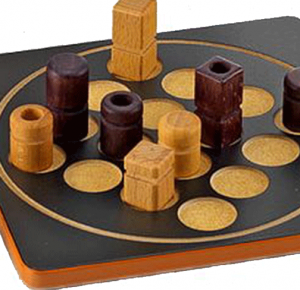

Grade 5 – Blokus
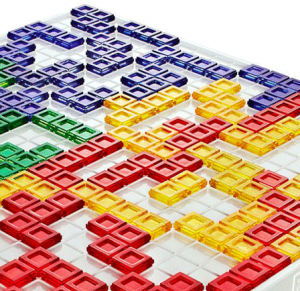

Grade 4 – Minotaurus
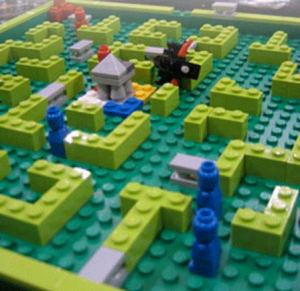

Grade 3 – Dice Games
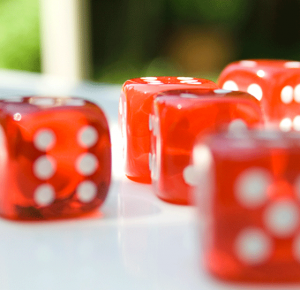

Grade 3 – Dice Games


Grade 1 – Robot Turtle
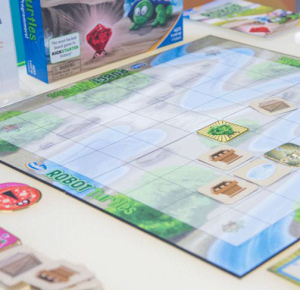

Kindergarten – Snakes and Ladders
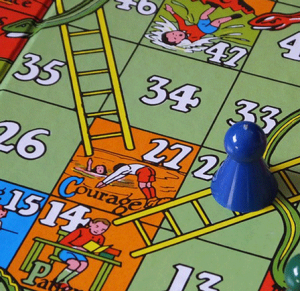

Junior Kindergarten – Dice Games


Nursery – Dominoes

Where's the Game?
The inherent structure of a game supports children as they determine which skills and strategies maximize their chances of achieving the goal of the game. Because many board, card, and dice games involve considerations of space, time, and number, the understandings which emerge are often mathematical.
Young children seem to have a drive for repetition, whether of word-perfect renderings of bedtime stories or simple board games. This often signals that they are working through a developmental challenge of some sort.
“In their explicit, invariant structure, games provide a generative framework for the repetition and practice of concepts and procedures,” Julie says. “Through that repetition, coupled with the unpredictability of, say, each new throw of the dice, or an opponent’s unexpected move, children encounter the same concept in slightly different forms and begin to recognize common patterns behind how the numbers – or other aspects of the game – play out.”
Children begin to memorize dice combinations and count on from the larger die, not to satisfy an arbitrary adult expectation, but because that strategy achieves their goal more efficiently. Eventually, conceptual thinking begins to consciously drive what were initially rote procedures for playing the game. Thinking becomes more flexible as children, through this repeated experience, begin to understand the multitude of routes available to achieve their objectives.
“For a while, a child will have one game they’re obsessed with,” she says “Playing it again and again is rooted in a drive for mastery. The more they play it, the better they get at it; random decisions become increasingly purposeful and strategic.”
Julie uses tic-tac-toe as an example that even the very youngest learners can play. With repeated experience, a child learns the advantages of going first in order to pick the best starting point. Strategy further develops as they begin to think not only about their own immediate move, but also anticipate how their opponent is likely to respond to that and future moves.
“Of course, having an attuned adult by their side can help direct children’s attention at an apt moment to the relevant information and explicitly support this reflective process,” she says. At the same time, there are also reasons to step back as children gain the skills to play games independently with peers. Learning to navigate the rules of a game (starting with turn-taking) and making your intentions clear to a friend without the mediation of an accommodating adult represents an impressive developmental feat.
It also allows a teacher the luxury of closely observing how different children tackle challenges that arise. Do they recognize the dot configurations on dice? Do they count accurately? Position themselves strategically in a counting-out rhyme? Spontaneously anticipate where a move will take them or their opponent? Teachers can find themselves amazed at the unexpected skill and determination shown by children in game contexts.
What the Research Says: Improving Number Sense Through Number Line Games
Playing linear board games has been shown to significantly increase young children’s numerical understanding. For example, informal experience with games such as Snakes and Ladders correlates with performance on various number line tasks (Ramani & Siegler, 2008). Developmental researchers Ramani and Siegler (2008; Siegler & Ramani, 2008) created a simple number line and dice game in which children were prompted to orally count on as they moved the number of spaces indicated on the die (e.g., a child’s token is initially on Space Four. She rolls a three and proceeds to count five – six – seven as she moves the token three spaces, landing on Space Seven.
The improvement resulting from four 15-minute sessions was sustained when children were retested two months later and eliminated the initial performance gap between participants from low- and high-income families. However, replacing the numerals on squares with colours or arranging the number sequence in a circular rather than linear format failed to show the same effect. These results, along with those in a number of related studies (e.g., Laski & Siegler, 2013; Siegler & Ramani, 2009) suggest some simple but effective modifications teachers can make to traditional board games to intensify mathematical learning.
The Dr. Eric Jackman Institute of Child Study Lab School
The Dr. Eric Jackman Institute of Child Study is a research institute and laboratory school of the Ontario Institute for Studies in Education at the University of Toronto. It is a Nursery to Grade Six elementary school. It is also a graduate education centre with a Master of Arts in Child Studies program and a multidisciplinary research centre in child development. The Robertson Program is proudly housed at the Institute of Child Study.
Author

Zach Pedersen
Program Coordinator, The Robertson Program
